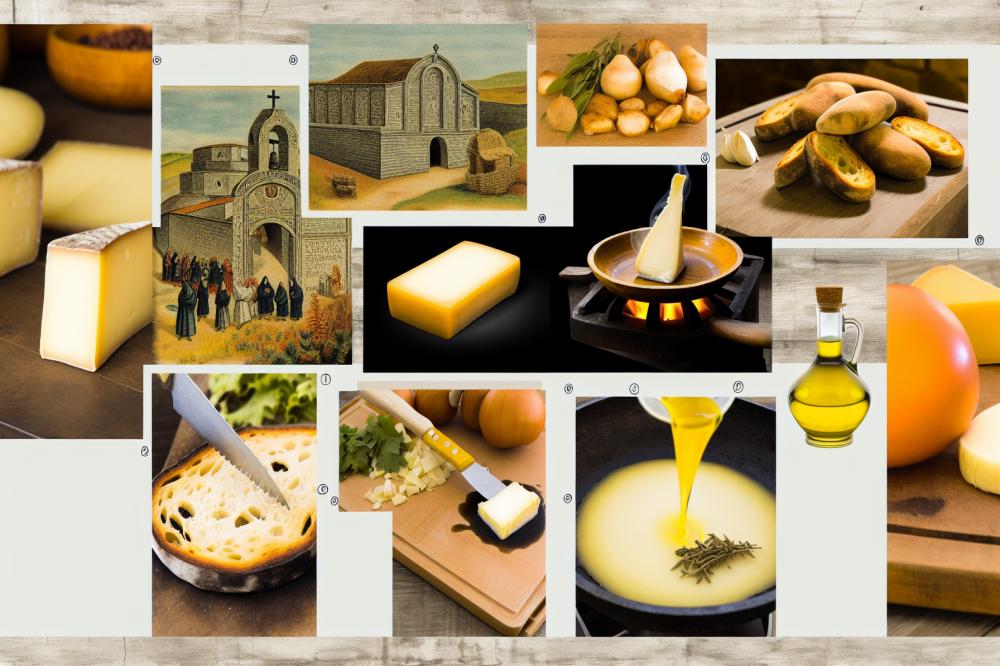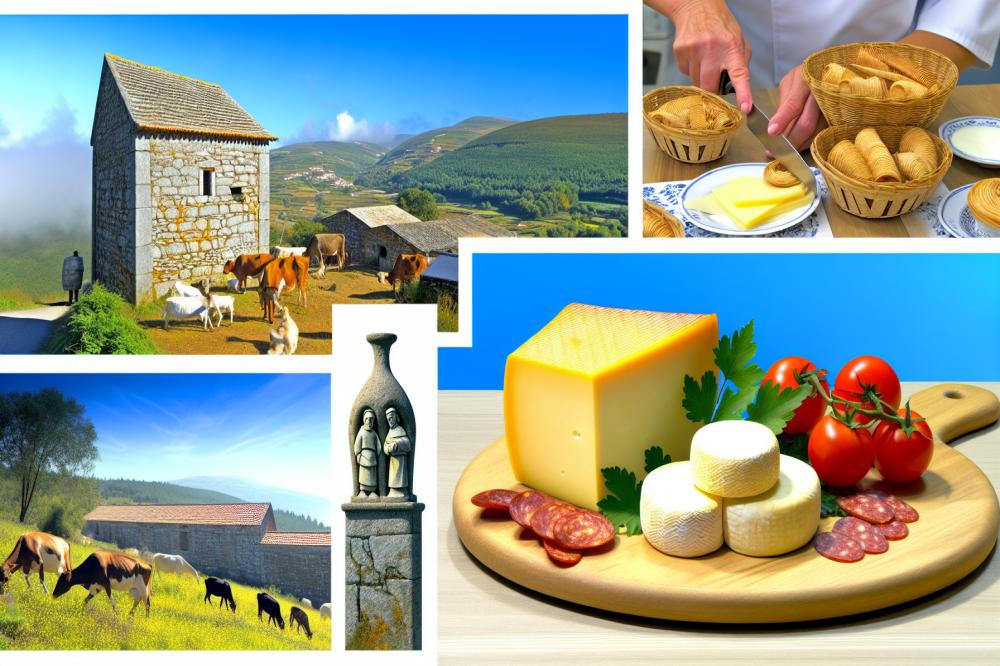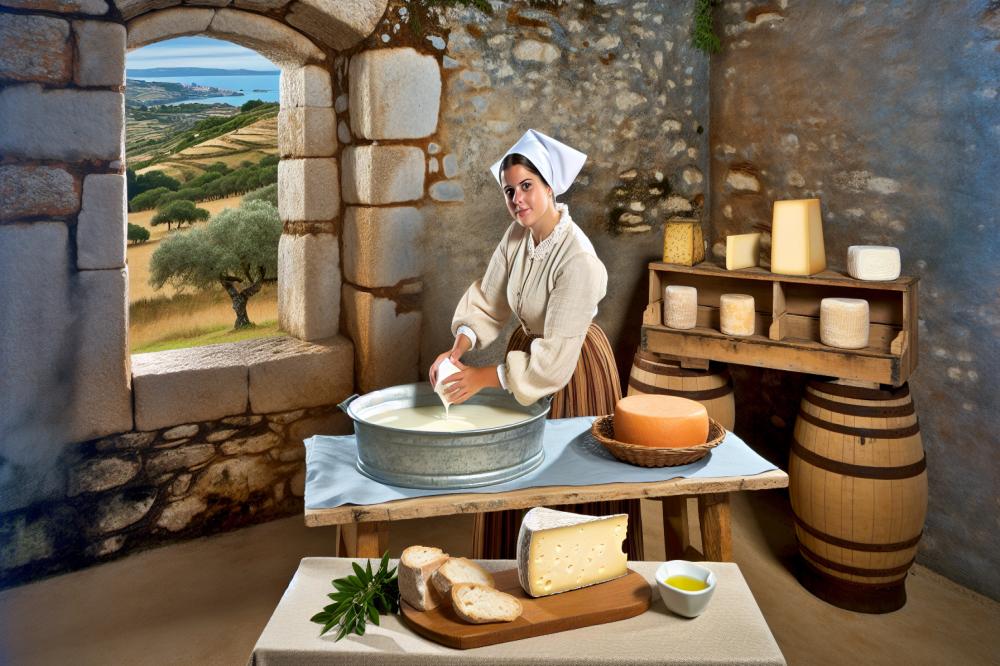A Look at Portugal’s Cheesemaking Portugal“>Monasteries
Portugal boasts a rich Cheesemaking heritage that is deeply woven into its culture. This nation is home to a variety of cheeses, each with its own story. From creamy and soft to aged and robust, Portuguese cheeses reflect the land’s diverse flavors and traditions. The artistry required to create these culinary delights has been passed down through generations.
Monasteries play a crucial role in the history and evolution of cheesemaking in Portugal. For centuries, monks adhered to their sacred crafts, often using recipes that have remained unchanged since medieval times. These religious communities not only contributed to the preservation of traditional methods but also innovated their own variations. Today, visitors can still find authentic cheeses made in ancient monasteries, where practices honor time-honored customs.
Some popular cheeses worth mentioning include Queijo da Serra, a flavorful sheep cheese hailing from the Serra da Estrela region. Another favorite is Queijo de Azeitão, known for its rich texture and distinctive tang. These cheeses are celebrated not just within Portugal but have also captured the attention of food lovers around the world. The melding of tradition and flavor in each bite offers a sense of comfort and nostalgia.
Overall, the story of Portuguese cheese is about more than just food. It weaves in the history of communities, their craftsmanship, and the land itself. Exploring this world reveals a tasteful tapestry as rich as the countryside of Portugal. For anyone interested in culinary delight, the cheeses from Portugal’s monasteries are an essential experience.
Cheesemaking

Portugal boasts a rich cheesemaking tradition that dates back centuries. This process combines age-old techniques with local ingredients to craft delicious cheeses. Farmers and artisans use simple methods passed down through generations. First, it’s vital to select high-quality milk, which is often sourced from local livestock. Cows, sheep, and goats all contribute to the diverse dairy landscape in the country.
Serra da Estrela cheese stands out as one of Portugal’s most famous varieties. Made primarily from sheep’s milk, this semi-soft cheese has a creamy texture and a distinctive flavor profile. The mountainous region where it is produced significantly influences its taste. Azeitão cheese, on the other hand, is another regional favorite. This cheese is made from raw sheep’s milk and has a tangy quality that delights the palate.
Different types of milk create different flavors in cheeses. Sheep’s milk has a rich, buttery taste, while goat’s milk often provides a sharper sensation. Each region in Portugal brings its own characteristics to cheesemaking. Local herbs, pastures, and environmental factors play a big role. The result? An array of cheeses with flavors that tell the story of their origin.
Artisans often work cooperatively, sharing knowledge and techniques. They take pride in maintaining traditional practices, ensuring the cheeses possess authentic flavors. In addition to the well-known varieties, small-batch farms produce a range of artisanal cheeses. These remarkable products can vary in taste, texture, and appearance.
Visiting Portugal offers a delightful opportunity to experience these cheeses firsthand. Local markets showcase a vibrant selection, and tasting events provide an authentic experience. Travelers often leave with a deeper appreciation for the region’s rich dairy heritage.
Monasteries

The history of cheesemaking in Portuguese monasteries dates back centuries. Monks were among the first artisans to craft cheese in this picturesque country. They learned their trade from ancient traditions, combining local ingredients with techniques passed down through generations. As time progressed, these religious communities became known for their dedication to quality and craftsmanship.
Among the many monasteries, Mosteiro de Alcobaça stands out. Founded in the 12th century, this site is famous for its rich history and delicious cheeses. Food lovers travel from afar to taste the iconic “Queijo do Mosteiro.” Another notable mention is Mosteiro de São Vicente de Fora, renowned for producing “Queijo de São Vicente.” Both locations offer a glimpse into a culinary legacy that shapes Portugal’s flavor profile.
Monastic traditions play a vital role in shaping the quality and variety of the cheeses produced. Monks apply strict methods that emphasize patience and precision. They follow guidelines that have been respected over generations, balancing tradition with slight innovations. The connection between the land and the milk results in distinctive flavors rarely found elsewhere. Each cheese reflects the hard work and dedication of those who craft it.
In these monasteries, you will find a range of cheeses that cater to diverse tastes. The process is meticulous, often involving natural fermentation and aging techniques. This care leads to interesting textures and aromas, showcasing what dedication can achieve. Local herbs and spices may even enhance flavors, creating delightful surprises in every bite.
Visiting these monastic cheesemakers reveals not just food, but also a story. Each cheese has a narrative rooted in the past, connecting people to Portugal’s rich heritage. Enthusiasts and casual consumers alike are rewarded with authentic experiences and flavors that tell a larger tale of history, culture, and passion.
Recipe: Portuguese cheese Toast (Queijo na Chapa)

Ready to enjoy a taste of Portugal? This simple recipe for Queijo na Chapa will delight your taste buds. It combines the rich flavors of queijo da serra, rustic bread, and olive oil that create a mouthwatering dish.
Ingredients:
- 200g of queijo da serra cheese
- 4 slices of rustic bread
- 2 tablespoons of olive oil
- Fresh herbs (oregano, thyme) for garnish
- Optional: sliced tomatoes or chorizo for serving
Instructions:
- Start by preheating a skillet over medium heat.
- Brush one side of each slice of bread with olive oil. Make sure to cover it evenly.
- Place the cheese on the un-oiled side of two bread slices.
- Top them with the other slices of bread, ensuring the oiled sides are up.
- Grill in the skillet until golden brown, about 3-4 minutes per side. This allows the cheese to melt nicely.
- Serve hot. Don’t forget to garnish with fresh herbs. If you like, add sliced tomatoes or chorizo on the side.
Nutritional Information:
- Serving size: 1 toast
- Calories: 320
- Protein: 12g
- Fat: 18g
- Carbohydrates: 30g
Health Benefits:
The rich cheese provides a good source of calcium and protein. Olive oil offers healthy fats, which are beneficial for the heart. Fresh herbs add flavor and excitement. They also bring antioxidants without adding extra calories. Enjoy this dish not just for its taste, but also for its many health benefits!
Final Thoughts on Portugal’s Cheesemaking Heritage

Portugal’s rich traditions in cheese production reflect centuries of culture, skill, and dedication. Monasteries have played a pivotal role in this craft, serving as guardians of recipes and methods passed down through generations. Each region boasts its own specialties, crafted by monks who poured their hearts into every wheel and wedge. These places are more than just production sites; they are historical landmarks where the sacred and culinary arts intertwine.
Exploring Portuguese cheeses is an invitation to savor the past and enjoy flavors that tell a story. From creamy Azeitão to pungent Queijo da Serra, every taste offers a glimpse into the land and its people. Recipes featuring these cheeses can enhance any meal, bringing an authentic taste of Portugal to your kitchen.
As you sample various cheeses, consider the cultural heritage behind them. Each bite encapsulates practices and traditions that deserve our appreciation. Next time you enjoy a cheese platter or a cheesy dish, remember the monks’ dedication and the art that goes into making these delicious treats. Celebrate the journey of Portuguese cheese and let it inspire your culinary adventures.



